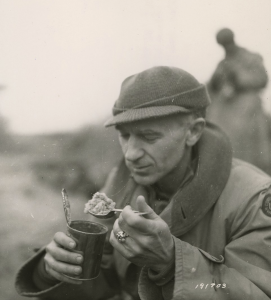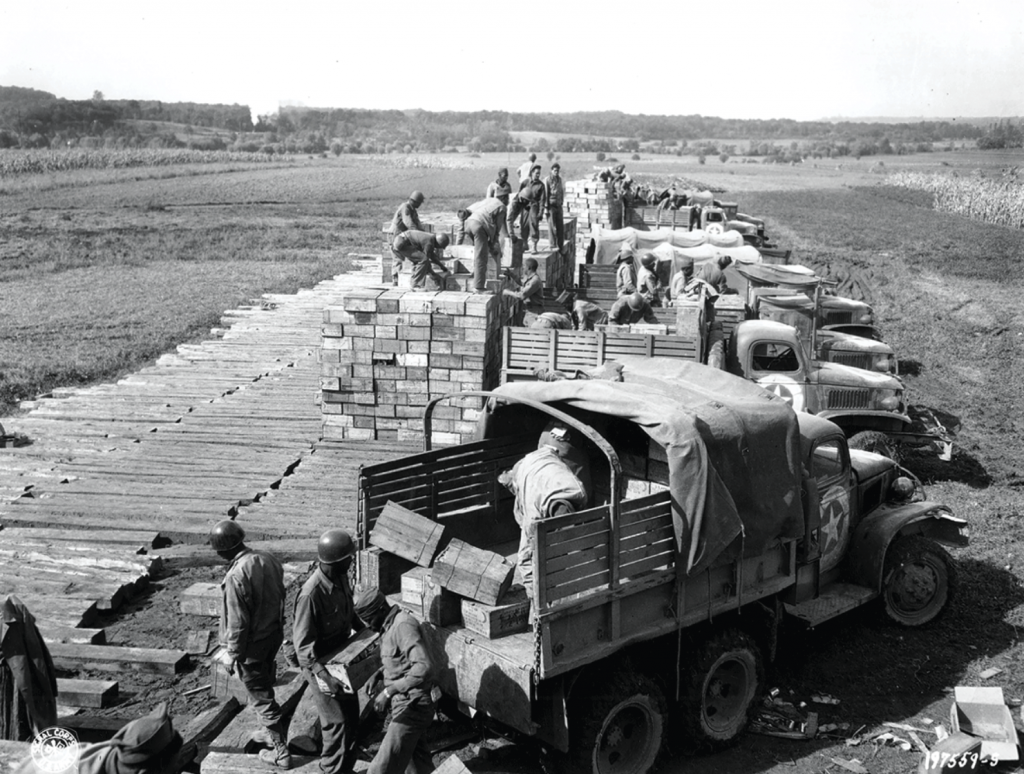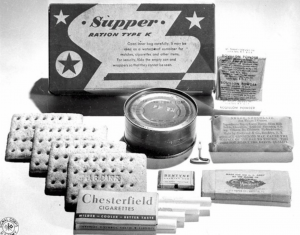Have you ever wondered what the difference is between C-Rations and K-Rations? During WWII, US military officials had to find a way to feed the troops when they weren’t near a mess hall. Rations were prepackaged meals, easy to prepare, and intended to be eaten in the field. The Unit History of the 63rd Infantry Division breaks down some of the different types of rations that fueled troops and helped Allies win the war.
A-Ration: A-rations were the most preferred by US fighting forces and consisted of fresh, refrigerated, or frozen foods. The meals were prepared in kitchens or field kitchens and generally served in permanent dining halls.
B-Ration: B-Rations were prepared by trained cooks in a field kitchen while on the move. Ingredients consisted of canned and dehydrated foods that did not require refrigeration. Thus, the food could be kept in a truck or wagon for months without spoiling.
C-Ration: Often called C-Rats, these rations were designed for individual combat troops and consisted of precooked food in tinplate cans that opened with a key. Initially, officials calculated that C-Rations would only be consumed for no more than three days at a time and produced just three varieties. As fighting forces relied more on C-Rations, they quickly tired from the lack of variety, and the military eventually expanded the offerings. C-Rations could be eaten cold but tasted better heated and included an entrée, such as pork and beans, or spaghetti and meat sauce. They also contained biscuits or crackers, gum or candy, and cigarettes.
D-Ration: The D-Ration was a heat-resistant, fortified chocolate bar intended to provide high energy in a small package that soldiers could carry in a pocket. Formulated with help from Hershey Food Corporation, the 1,800 calorie D-Ration contained concentrated chocolate, vitamins, and other ingredients meant to sustain a soldier during an emergency. It did not taste appealing, preventing soldiers from nibbling on the bar unless necessary.
K-Ration: Originally developed for paratroopers by a University of Minnesota physiologist Ancel Keys, the K-Ration had lightweight but durable packaging. Three K-Ration meals provided 2,830 calories but proved inadequate for some soldiers who required more calories per day based upon their strenuous output. A sample supper ration included a meat product, biscuits, a chocolate bar or caramels, bouillon, coffee, sugar, wooden spoon, cigarettes, chewing gum, and a packet of toilet paper.
In addition to the rations above, the military had additional field rations and modified existing rations throughout the war. What stories have you heard about WWII military rations? Search Fold3® to learn more about military rations and see our complete WWII records collection.



No comments:
Post a Comment